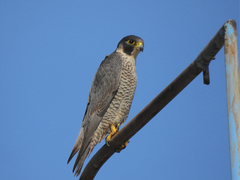Muscovy duck
Cairina moschata domestica
Aves Cairina moschata domestica, commonly known as the Muscovy duck, is a species of duck native to the Americas. In the Comunidad Valenciana, as well as in other parts of the world, they are often referred to as pato criollo or pato mudo due to their notably silent behavior compared to other duck species.
The Muscovy duck is distinct for its substantial size and unique appearance. Below are some key characteristics:
- Appearance: These ducks have a large, robust body with a bare face and pronounced red or black caruncles. Their plumage can vary widely, but common colors include white, black, and brown.
- Habitat: While they are often seen around water sources such as ponds, lakes, and rivers, Muscovy ducks are also adaptable to urban and rural environments as they seek food and nesting areas.
- Diet: They are omnivorous and consume a varied diet of plants, small fish, and insects. In human-populated areas, they might be seen feeding on leftovers or foraging for food in gardens.
- Behavior: Unlike many duck species, Muscovy ducks are relatively shy and tend to be less vocal. They may make a hissing or quiet cooing sound when communicating.
- Reproduction: Muscovies tend to nest in tree hollows or in dense vegetation close to water. They lay a clutch of eggs which are incubated primarily by the female for about 35 days.
In the Comunidad Valenciana, Muscovy ducks can be frequently spotted in parks and gardens, where their quirky mannerisms and adaptability to urban and semi-urban environments make them a familiar sight to locals and visitors alike.







